Fitbit’s Versa line of smartwatches has always been a winner: They’re less hideous than the Ionic and the Blaze (which we’re still trying to forget), less expensive than most of the competition, and decently full-featured. The Fitbit Versa 3 continues that steady, dependable, and affordable tradition, though the simultaneous launch of the more premium Fitbit Sense has muddied the waters a bit as to which Fitbit is the best for most people.
The Versa 3 is kind of like the Apple Watch SE in that it’s a pared-down version of a flagship smartwatch, but shares the majority of the same features you’d use on a daily basis. You get NFC payments via Fitbit Pay and the ability to take calls from the wrist. You also get a voice assistant in the form of Amazon Alexa, and with the recent Fitbit OS 5.1 update, Google Assistant. With the Versa 3, Fitbit has also added built-in GPS — one of the main omissions from previous Versas. Lastly, the Versa 3 has an estimated battery life of up to six days. You can also quickly juice up to a whole day’s worth of battery by charging the watch for just 12 minutes.
To coincide with its new watch launches, Fitbit also redesigned its interface to make it way more intuitive, and you get the same new UI in both the Sense and Versa 3. Both watches also received the same Pure Pulse 2.0 algorithm update. In the app, you also get the same SpO2 clock face that the Sense did, as well as the new health metrics dashboard.
The main features that set the Sense apart from the Versa 3 are its electrodermal activity (EDA) sensor for monitoring stress, a dedicated body temperature sensor (with Fitbit Premium, the Versa watches estimate your surface body temperature with existing sensors), and FDA-cleared ECGs. But if you don’t need all that, the Versa 3 is a solid smartwatch in its own right.
Editor’s Note: This feature may functional differently in Australia due to local health regulations.
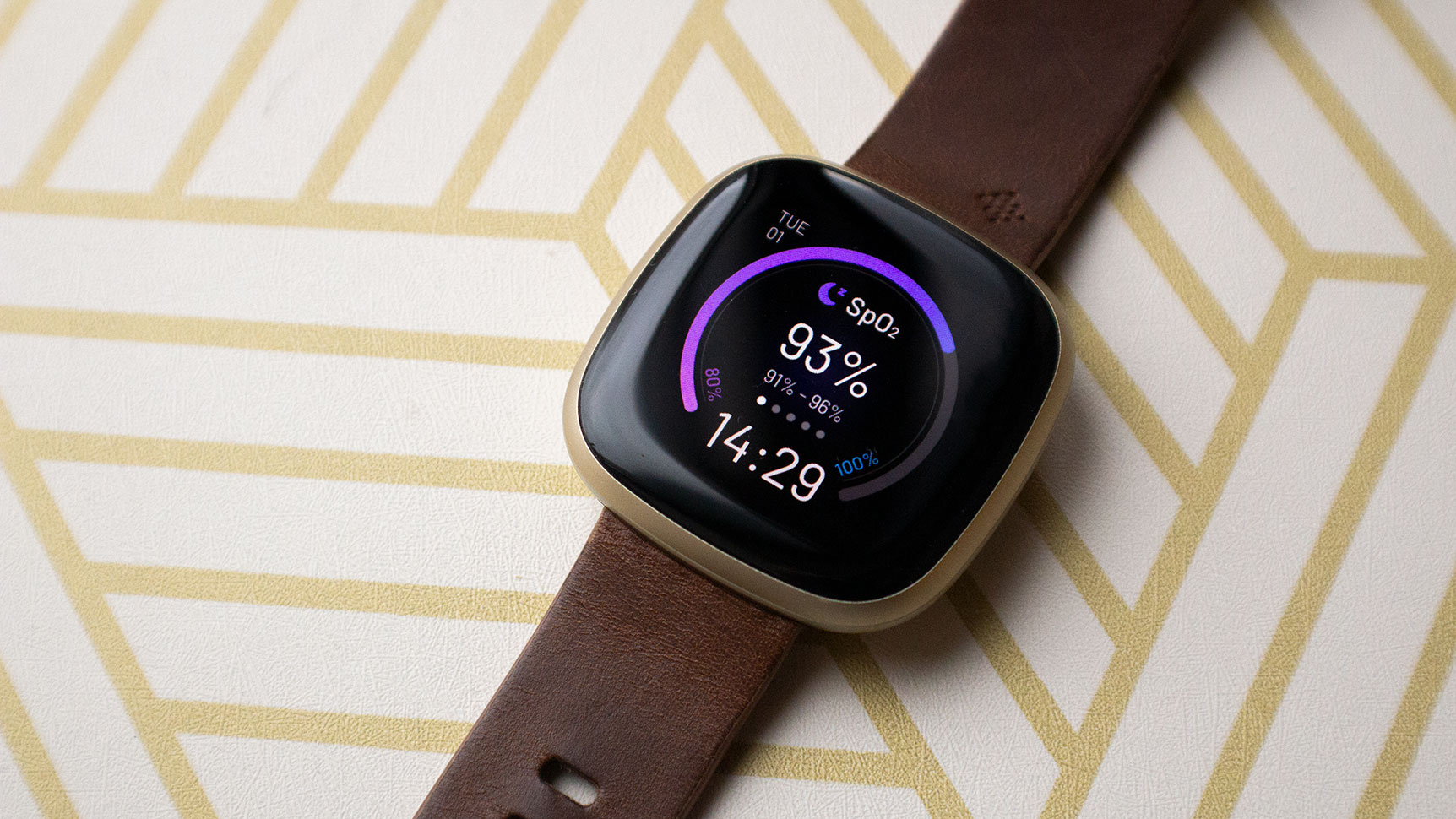
Fitbit Versa 3
What is it?
Ironically, the fourth Versa smartwatch
Price
$399.95
Like
Good battery life and tracking. Adds Google Assistant and built-in GPS!
No Like
Occasional wonky heart rate reading during exercise
I’ll be blunt: The majority of people probably won’t be missing out on having on-demand ECGs. If you’ve got a clean bill of health, and your doctor says you’re unlikely to be at high risk for atrial fibrillation, a smartwatch ECG isn’t designed with you in mind. It’s a supplementary monitoring tool for people who have heart conditions or might be at risk for them. The average person is more likely to miss the Sense’s EDA sensor. While Fitbit isn’t the only wearables company to dabble in stress-tracking, in my testing, I found the Sense’s feature to be the most thoughtfully implemented. If you want to improve mindfulness in these extraordinarily stressful times, missing out on this feature is a bummer. If you think mindfulness is hippy-dippy nonsense, then you’re good.
[referenced id=”1506478″ url=”https://gizmodo.com.au/2020/09/the-fitbit-sense-is-one-hell-of-an-ambitious-smartwatch/” thumb=”https://gizmodo.com.au/wp-content/uploads/2020/09/22/tyf2agjfk8al4qkpnz7c-300×169.jpg” title=”The Fitbit Sense Is One Hell of an Ambitious Smartwatch” excerpt=”The Fitbit Sense is a smartwatch that has a lot to prove.”]
Even in terms of design, you’d be hard-pressed to tell the difference between the Sense and Versa 3 at a glance. The main giveaway is the Sense has a metal border up top and around the sensor array, which enables the ECG function. Otherwise, they’re nearly identical. They both even use the same charger, which nice considering Fitbit is notorious designing a separate proprietary charger for each gadget in its lineup. So if you and someone you live with purchased a Versa 3 and a Sense, you’d be able to use both chargers interchangeably. Or if at some point down the line you wanted to upgrade to the Sense, you’re still good. The bad news is if you’re upgrading from the Versa, Versa 2, or Versa Lite Edition, your charger is useless.
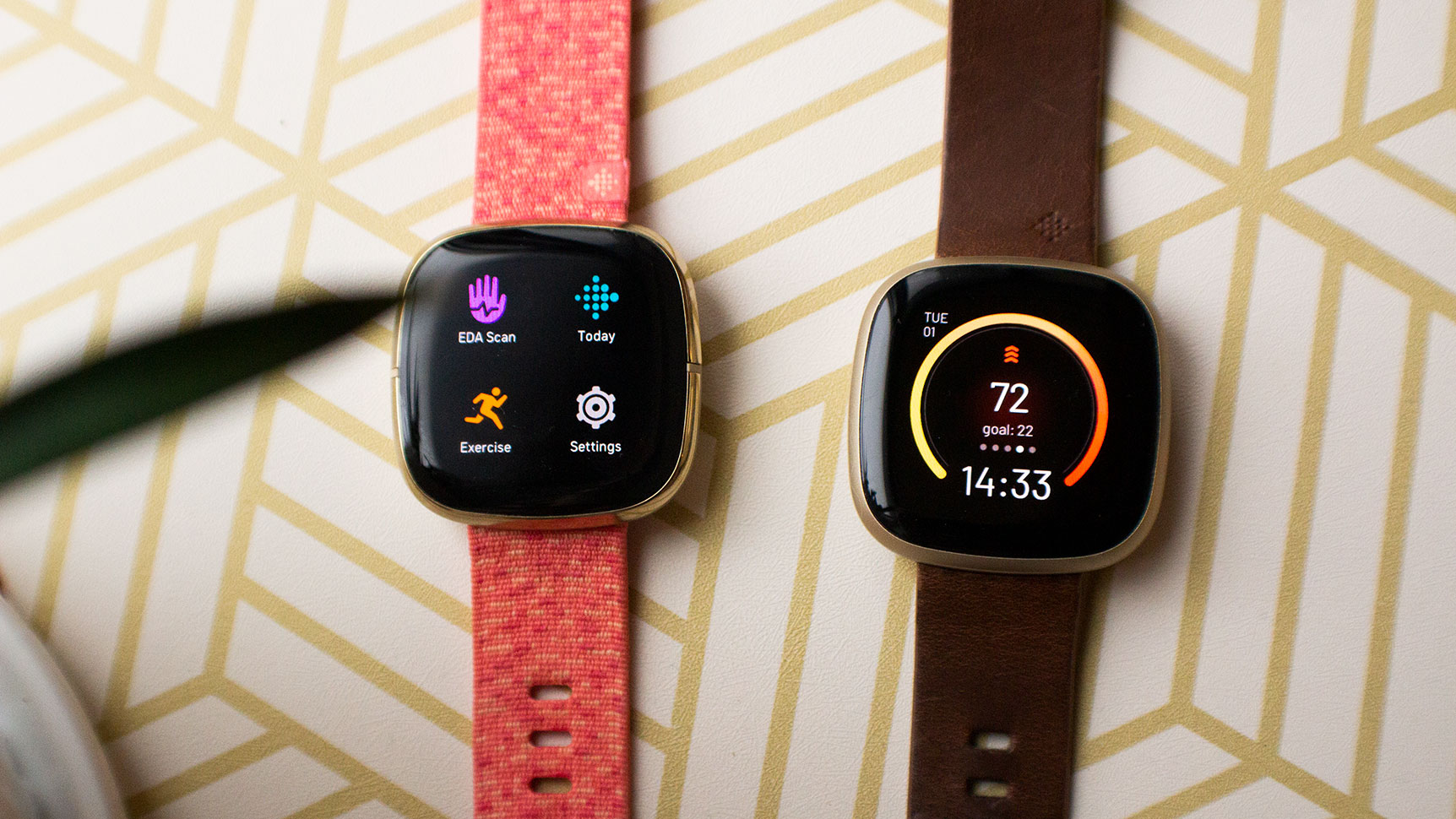
Compared to the Versa 2, however, the Versa 3 has a slightly larger display at 1.58 inches compared to the Versa 2’s 1.39-inch display. The Versa 3 is also bigger all around, measuring 40.38mm x 40.38mm to the Versa 2’s 39.8mm x 39.8mm. It’s also about 0.35mm thicker. I’ve used both devices and I didn’t notice the change that much. Most importantly, the Versa 3 is still perfectly comfortable for all-day wear.
If the design is mostly the same, then what about battery life? Well, that’s pretty much the same, too. In the two weeks I wore the Versa 3, I got on average about five days on a charge. That’s a little less than the estimated 6+ days, but thanks to election stress, I also went super hard on GPS exercises. On average, I found that a 30-minute GPS run drained the battery by about 4-5% each session. You’ll likely get more mileage if you’re more into non-GPS exercises like weight-lifting or yoga.
I compared the Versa 3 to the Oura Ring when it comes to sleep-tracking. They were mostly on par when it came to duration and disturbances, like my pets smacking me awake for midnight snacks. The sleep stages graphs were also similar, though not always 1:1. They weren’t, however, wildly different. Body temperature readings during sleep also corresponded when both trackers were worn on the same hand.
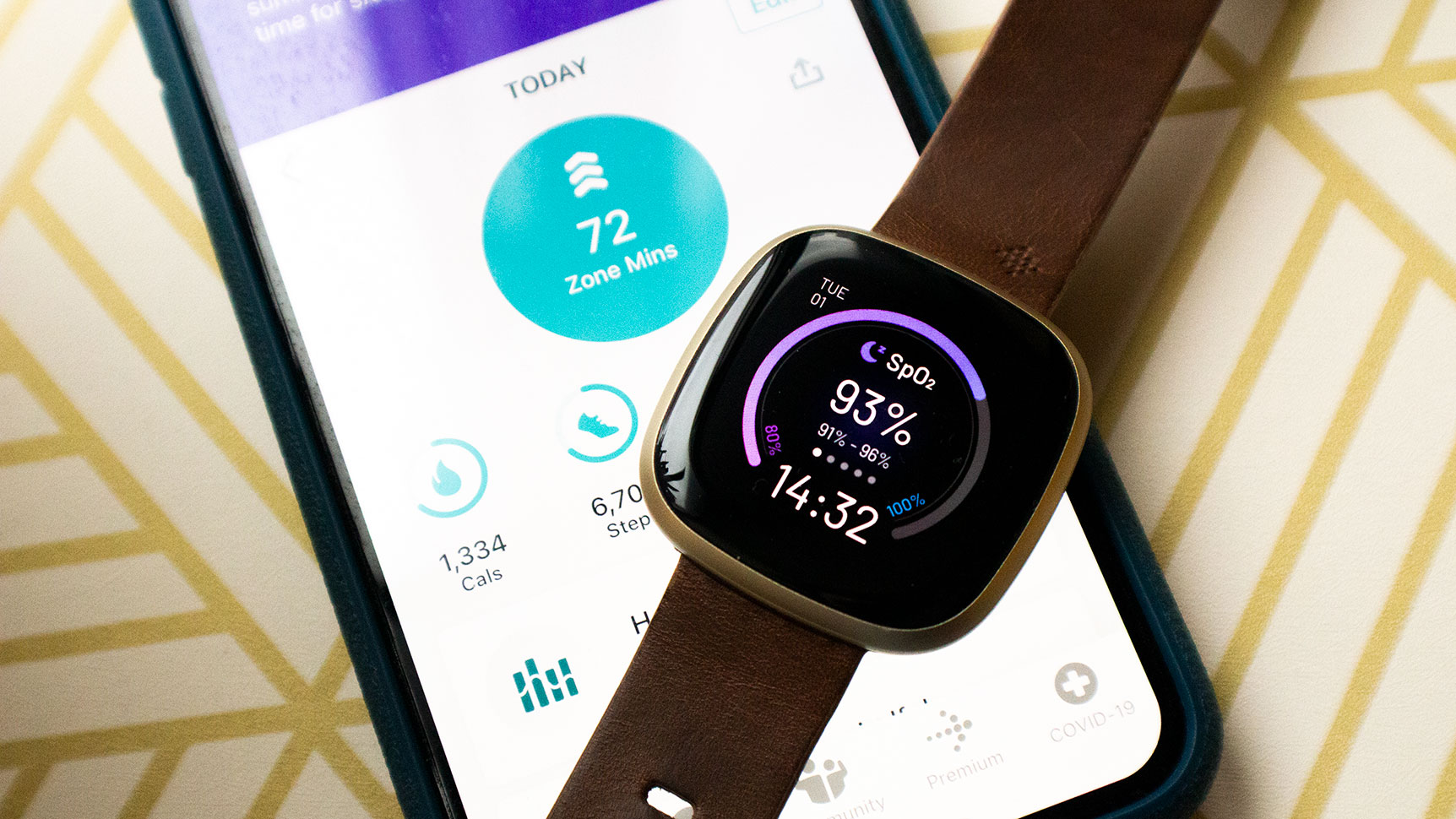
As for GPS distance, I found the Versa 3 was decently accurate. I tested it on several outdoor runs against my phone and the Apple Watch SE, and generally found the Fitbit underreported by one to two-tenths of a mile, per mile. For example, on a recent 5 km run recorded by my phone, the Fitbit Versa 3 logged 5 km and the SE logged 5 km. On another 5 km run, the Versa 3 recorded 5 km and the SE recorded 2.73. The majority of my test runs generally followed this pattern. At longer distances, however, the discrepancy did get a bit bigger. On a 6 km run, the Versa 3 only registered 5 km to the SE’s 5 km.
There’s a lot of reasons why that might be. I noticed from time to time during my runs I’d get a notification that the GPS dropped out on the Versa 3 and would reconnect. Those dropoffs weren’t that frequent or long but might’ve been enough to throw things off a little. I also live and work out in an area that’s not the best for GPS signals — which might also explain why it took the Versa 3 about a minute to find GPS every time I went outside. Generally speaking, each GPS tracking device you use is going to be a little off of the other one so these discrepancies were perfectly normal. Plus, the Versa 3 was consistently “off” by the same amount, meaning if you wanted to progressively increase your distance, you’d be fine overall. You just might want to mentally factor that in when prepping for race day.
While the Versa 3 shares most of the same pros as the Fitbit Sense, it also shares one mildly concerning con. With the upgrade to the Pure Pulse 2.0 heart rate algorithm, I noticed both the Sense and Versa 3 tended to “underreport” heart rate during workouts by about 5-10bpm. Sometimes that felt like a lag in the workout app. For instance, I’d flick my wrist up and my heart rate on the Versa 3 would be 140bpm while the Polar H10 chest strap and the Watch SE would say my heart rate was 170bpm. A second or two later, I’d flick my wrist up and the Versa 3 would then report 165bpm. A discrepancy of 5bpm is normal; 30bpm is not. This really only happened during outdoor runs and happened most frequently during interval runs. My overall exercise reports generally showed the same heart rate charts between the Versa 3, Watch SE, and Polar H10. It’s not something I experienced during strength training, yoga, or walking workouts. I’ve reached out to Fitbit about it with regard to both the Sense and Versa 3, but haven’t gotten a response yet. It’s possible this is something that will work itself out in future OS updates, but it’s something that anyone who does interval training, HIIT workouts, or heart rate zone training should keep in mind.
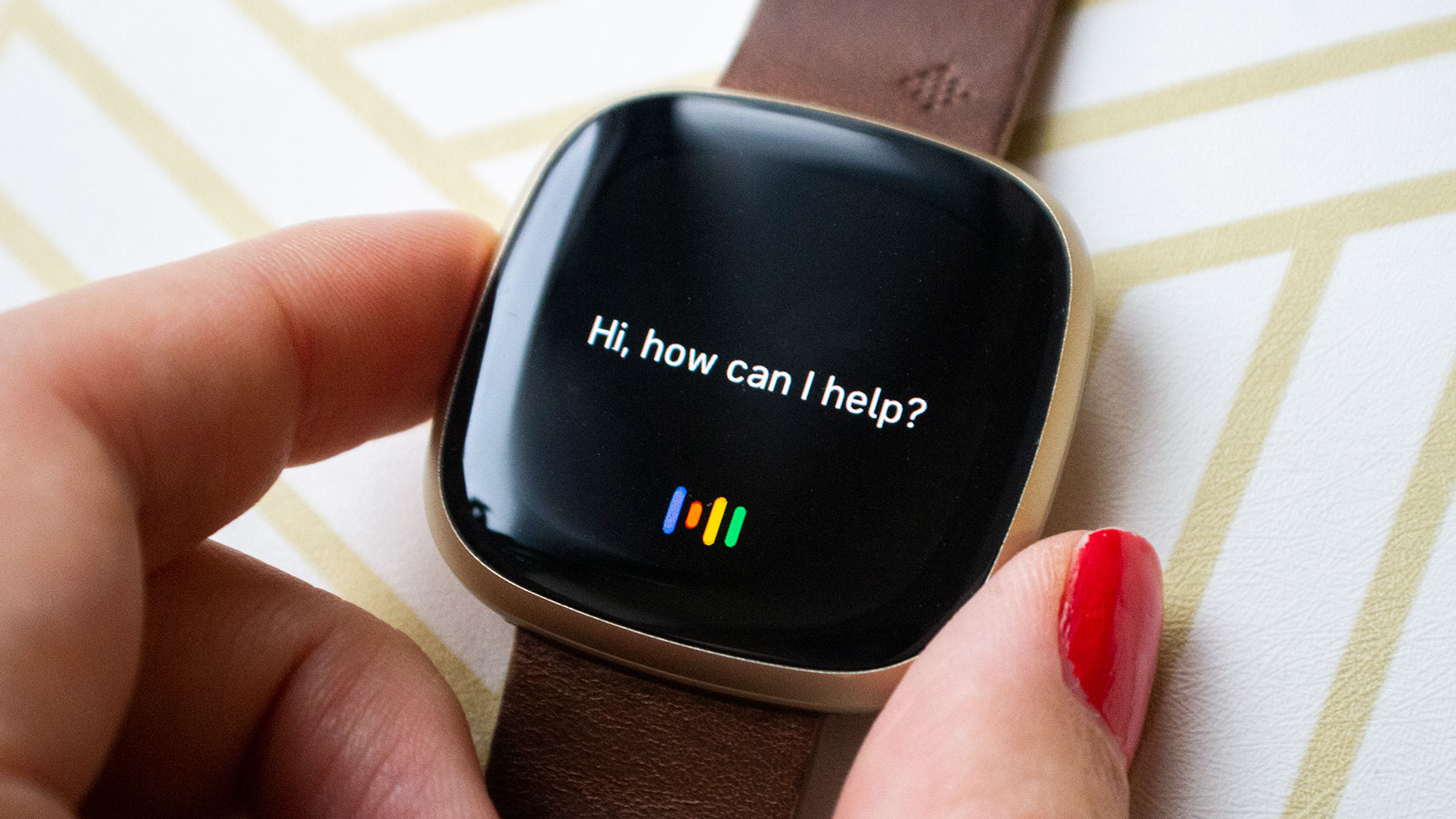
The Versa 3’s other notable addition, Google Assistant, is pretty sweet. While I do occasionally use Alexa at home, I prefer Google Assistant, and being able to control my smart lights using the Versa 3 was neat. The ability to choose between the two is definitely a perk. But the Versa 3 also has a built-in speaker, which means you can get audio responses from Alexa on the watch — that feature isn’t yet available with Google Assistant, though you can tap on preset follow-up responses. Bluetooth calls were also a welcome addition, especially when I didn’t want to get cooking gunk all over my phone. You do, however, need your phone nearby for both these features, because the Versa 3 doesn’t have its own cellular connection.
At $399.95, the Versa 3 is only slightly more expensive than the Versa 2 — and that’s likely because NFC payments are now a default feature, rather than a special edition add-on. However, unless you want built-in GPS, NFC, and Google Assistant, you don’t need to upgrade, as it’s only been a year. You should probably hold out. (That said, it’s definitely a bummer that Google Assistant isn’t compatible with the Versa 2.) As for whether it’s worth the extra $150 to splurge on the Sense, that really depends on whether you value the ability to take ECGs and whether mindfulness is a priority. To clarify, the stress-tracking doesn’t send you an alert every single time you’re stressed out. It’s more of an, “Oh, my metrics indicate this pattern and I’m also logging how I feel emotionally so that I can better understand that pattern.” I personally quite liked that approach, and think it’s worth the extra moolah. But I’m aware mindfulness isn’t everyone’s cup of tea and after using the Versa 3 for several weeks, I didn’t feel like I’d been cheated.
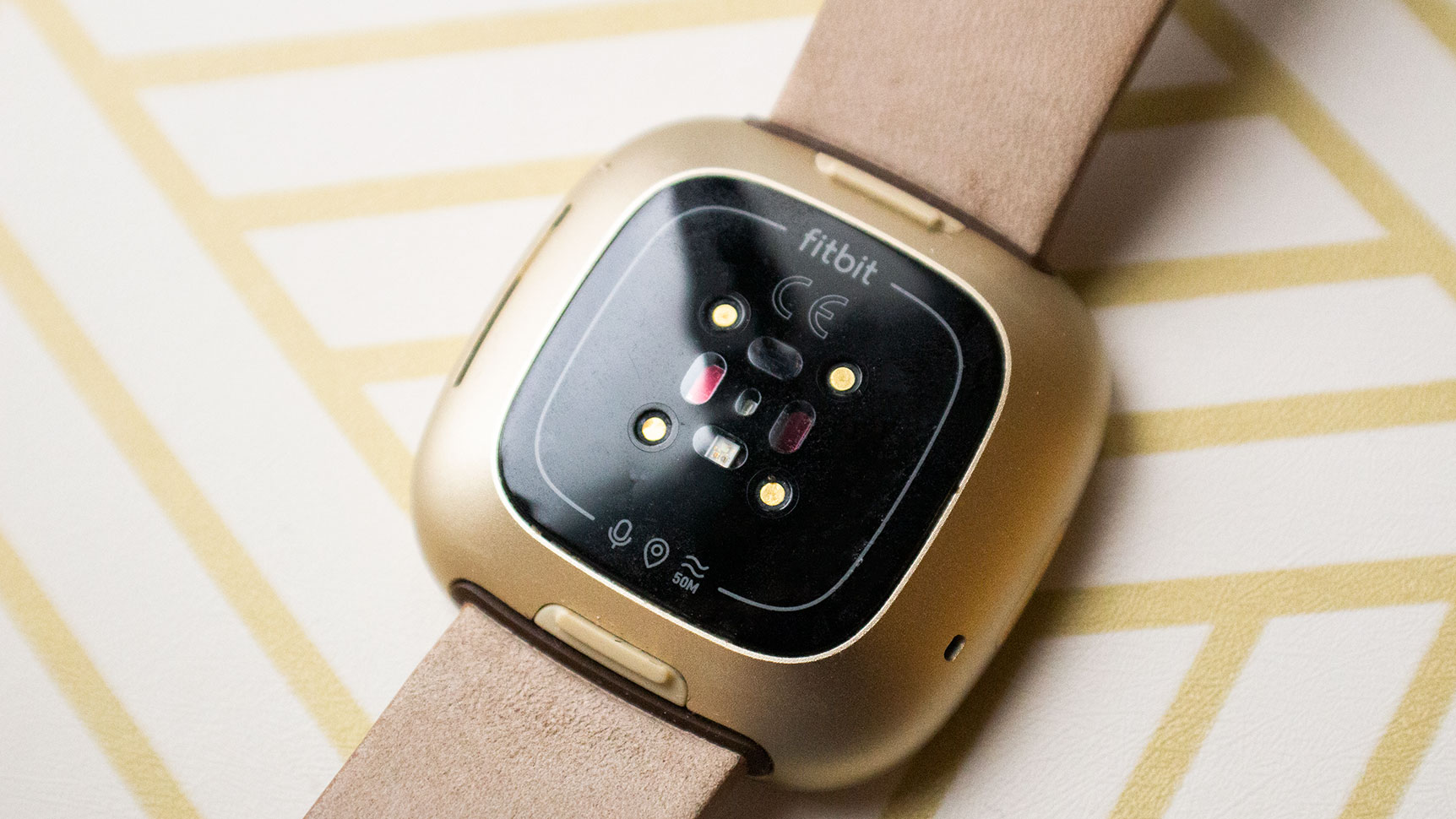
The one calculation I’d take into consideration is Fitbit Premium. Buying the Sense gets you six months free, though you can get a 90-day trial with the Versa 3 if you’re new to Fitbit Premium. It costs about $14 for a monthly subscription or $110 for an annual subscription, so when you factor that in, the Sense starts to look less expensive in comparison. Upgrading to Fitbit Premium gives you access to the Health Metrics dashboard (which includes data points like breathing rate, body temperature, and heart rate variation), guided programs, meditations, advanced sleep insights, and Premium challenges. However, the free app is still good — and if you don’t care about things like HRV and breathing rate, you’re not missing too much.
To be frank, the app and community are major reasons why you might want a Fitbit over a dirt cheap smartwatch that does many of the same things. The Versa 3 should be higher on your short list if competition with friends is something that motivates you. The Amazfit Bip S, for example, is just $US70 ($95) and is a very solid, basic fitness smartwatch. In my opinion, it’s a better value than some cheaper Fitbit trackers. However, the Bip S’s companion app leaves a lot to be desired and I don’t know too many folks on Amazfit’s platform.
Basically, the Versa 3 is a great but not terribly exciting update. It’s what the Versa 2 should have been, honestly, and I can see why some Versa 2 owners might be more than a little peeved (especially since they haven’t gotten the benefits of the last two Fitbit OS updates). The Versa 3 is maybe a half-step up from truly budget smartwatch territory, but not as expensive as a premium flagship. Even though it lacks the Sense’s ambition, it somewhat ironically is the Fitbit that makes the most sense for most people.
README
- As the Apple Watch SE is to the Series 6, so the Fitbit Versa 3 is to the Fitbit Sense.
- Adds built-in GPS, NFC payments by default, built-in speaker, Bluetooth calls, and Google Assistant.
- Design-wise, it looks like the other Versas and the Fitbit Sense.
- Unless you’re really into mindfulness and ECGs, you can get away with the Versa 3 and not really notice.
